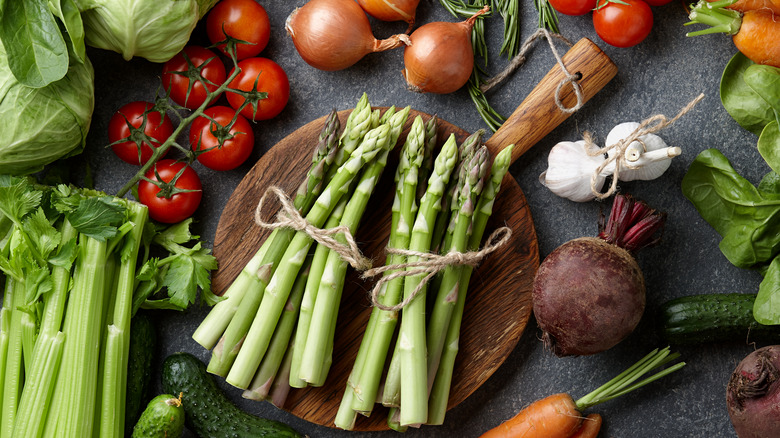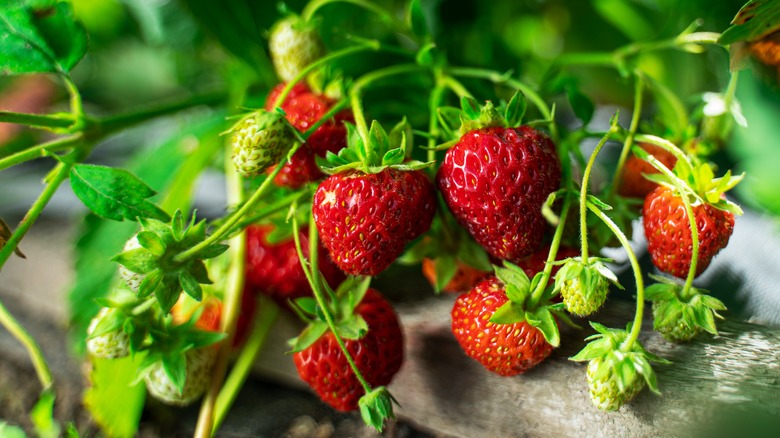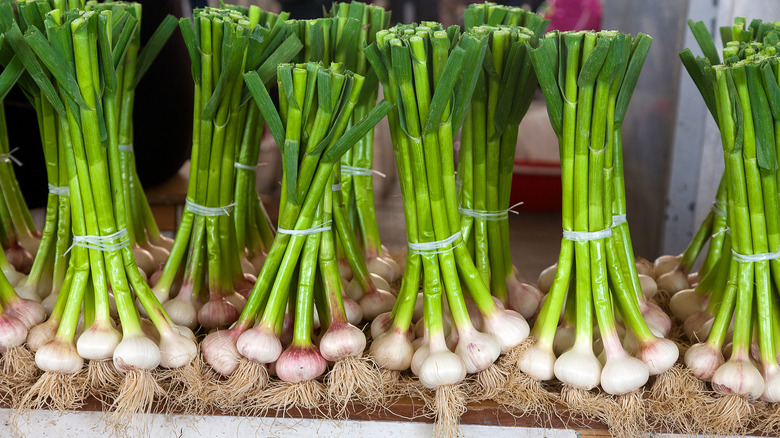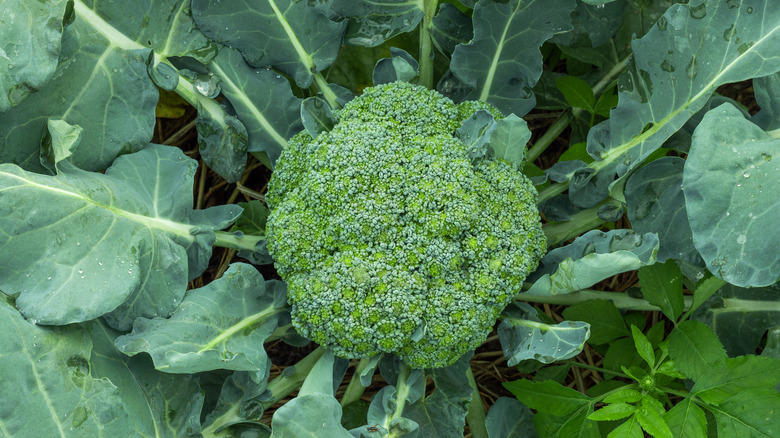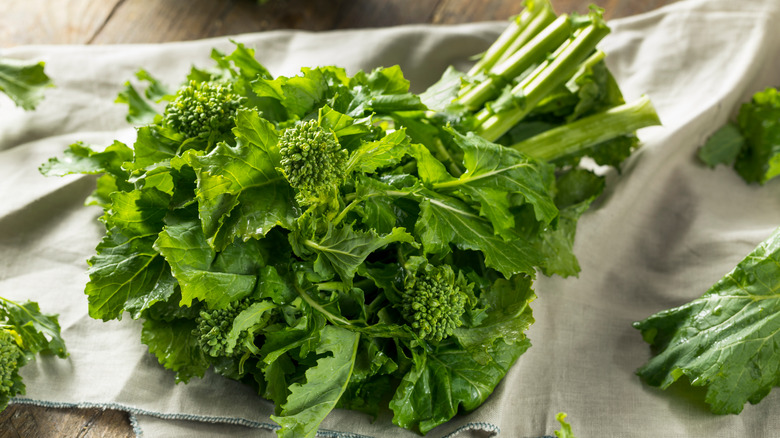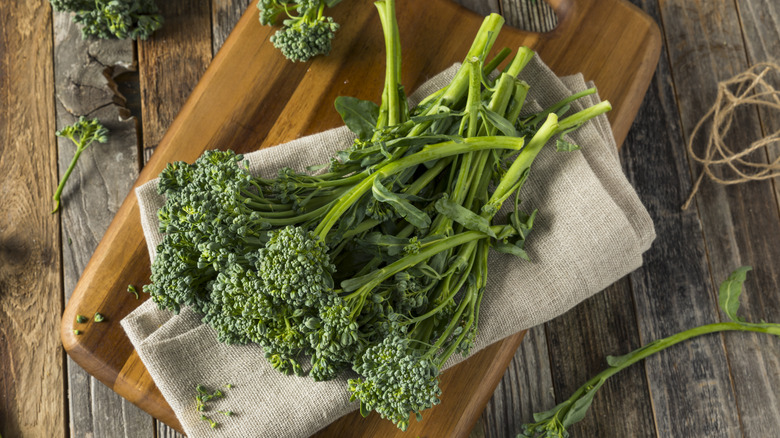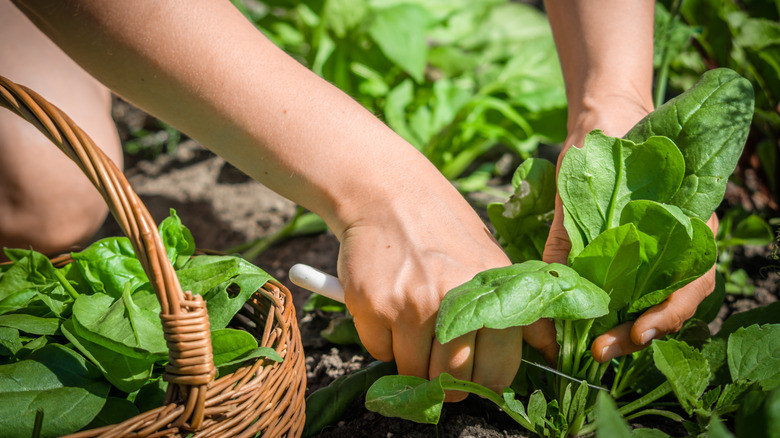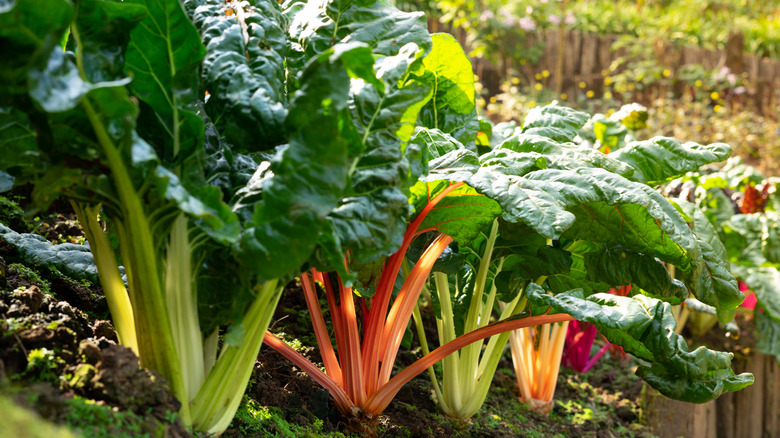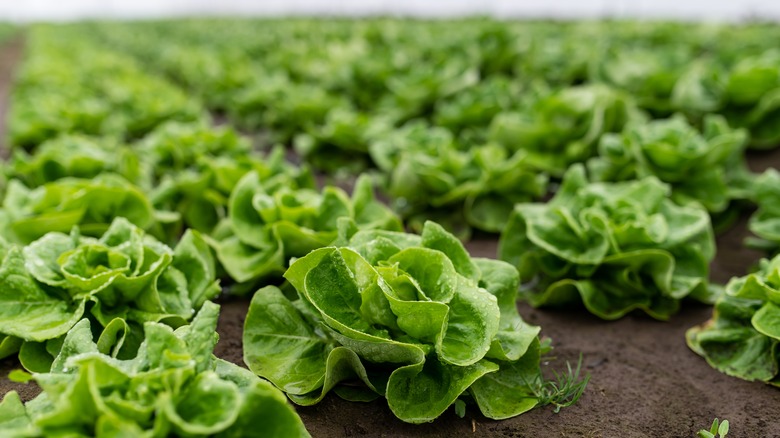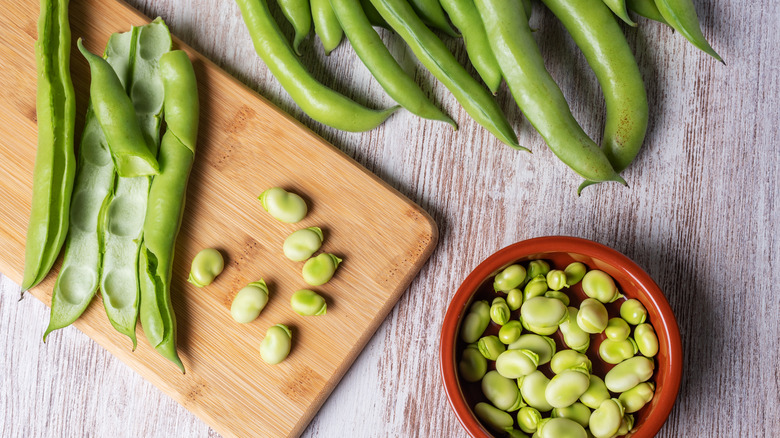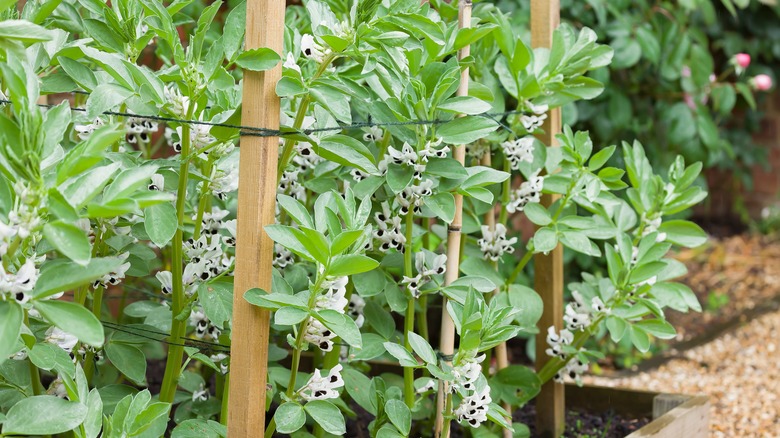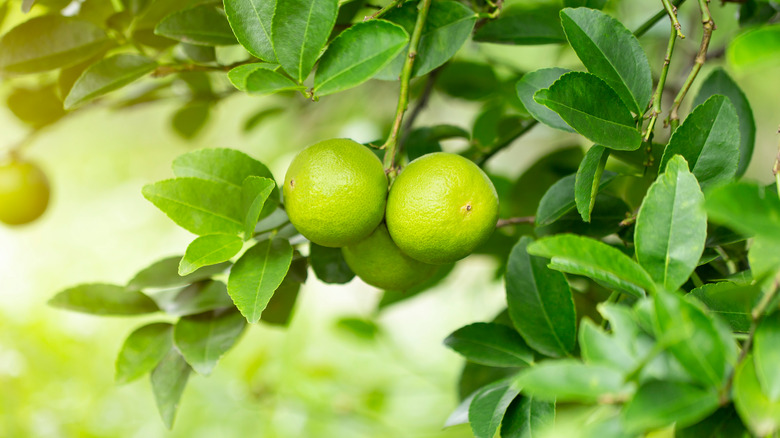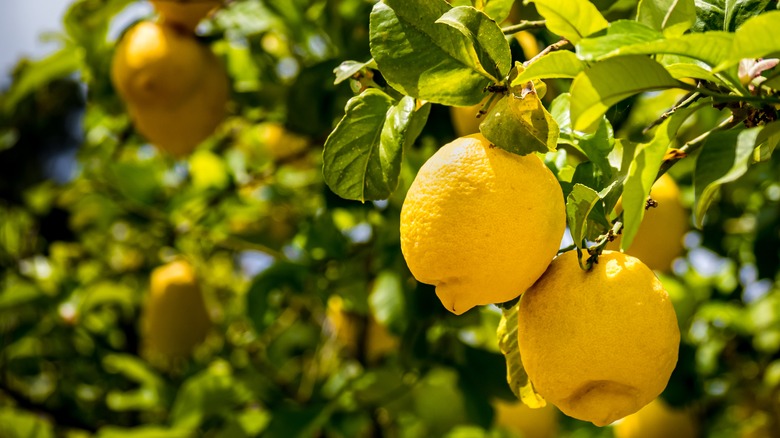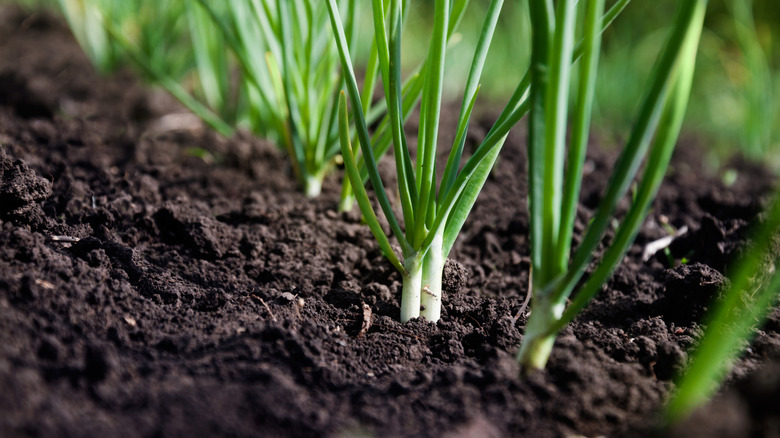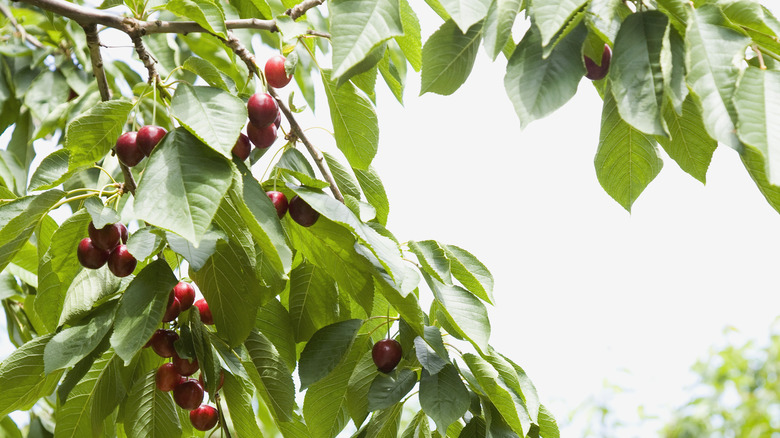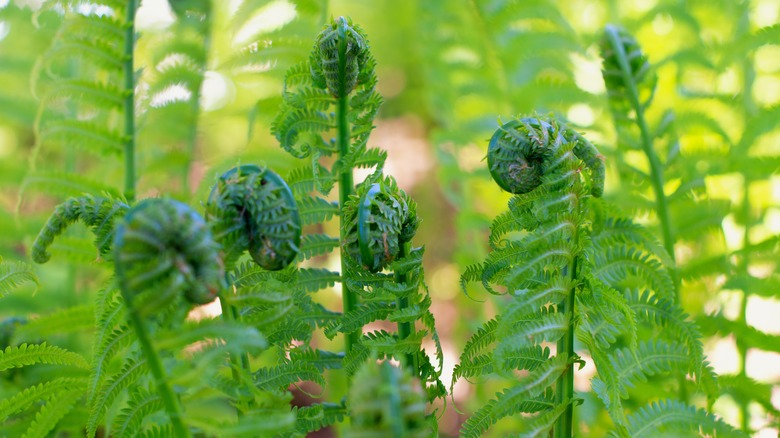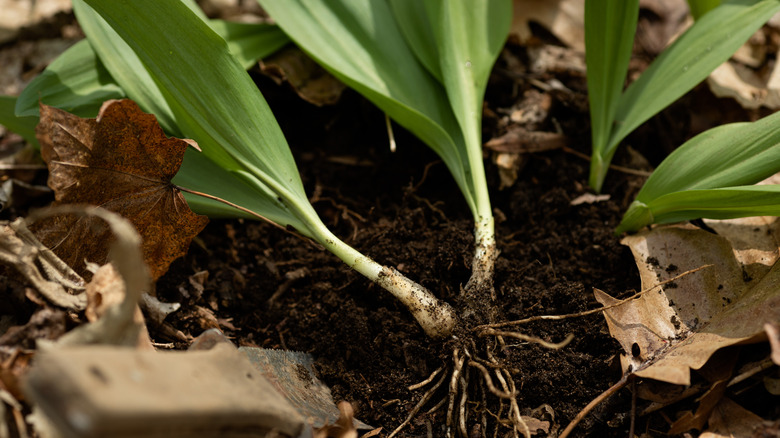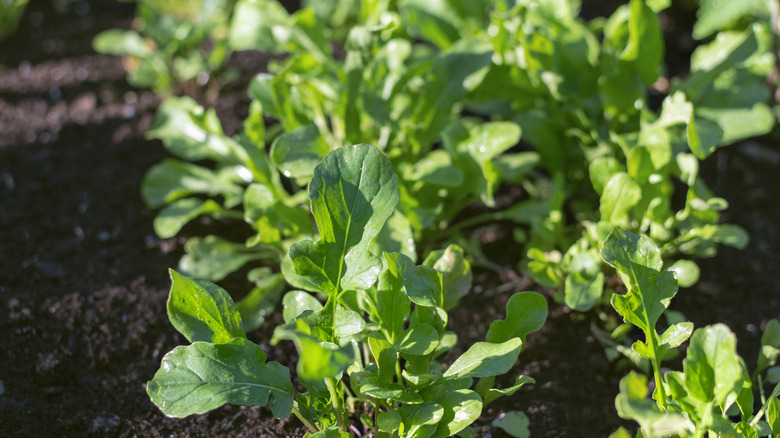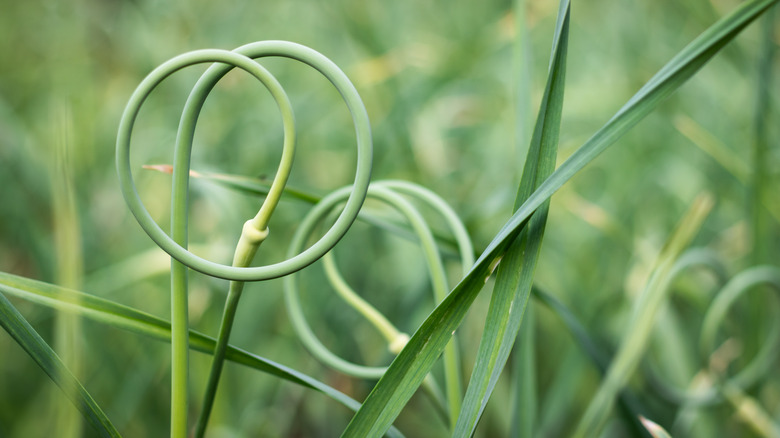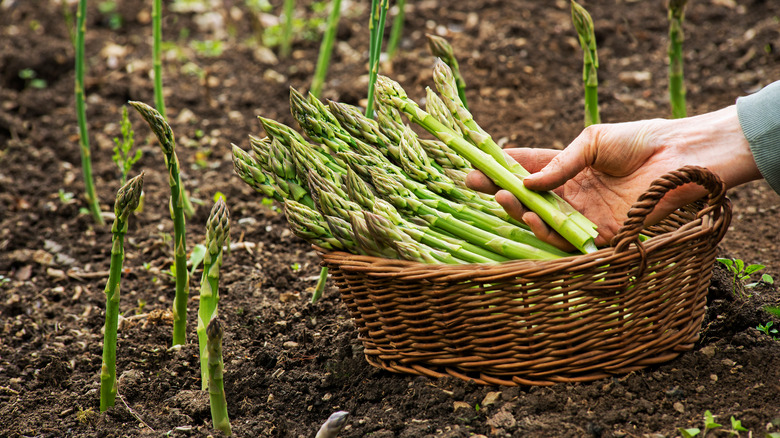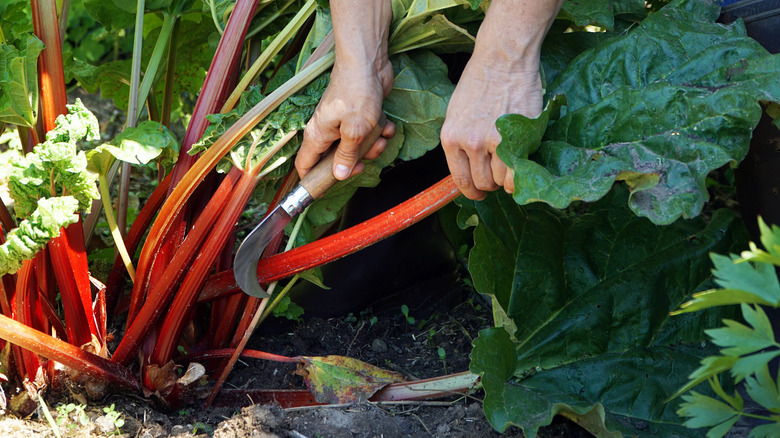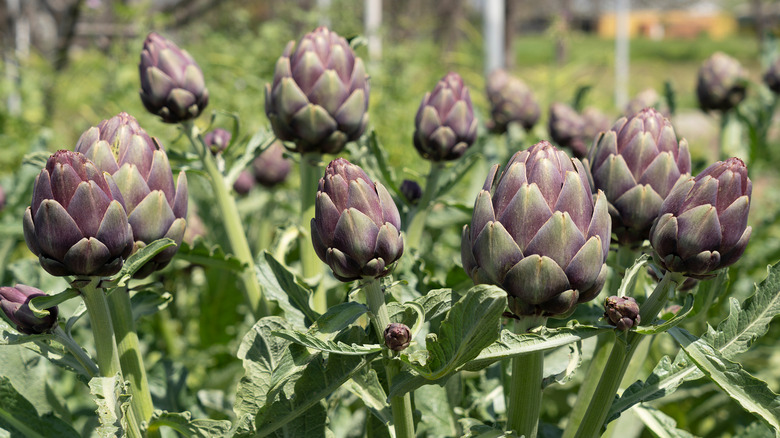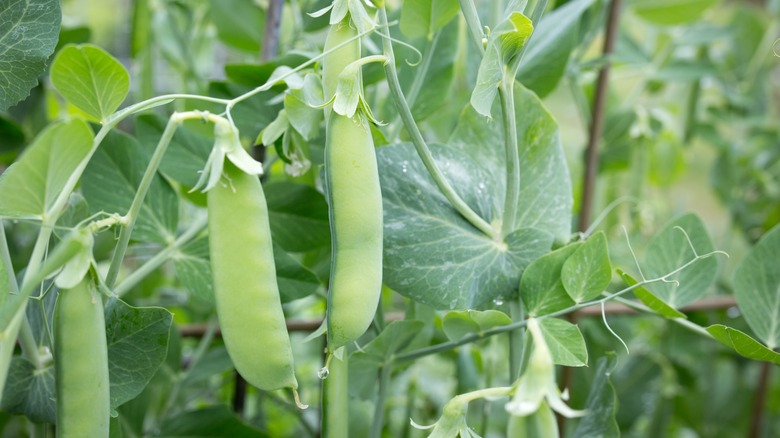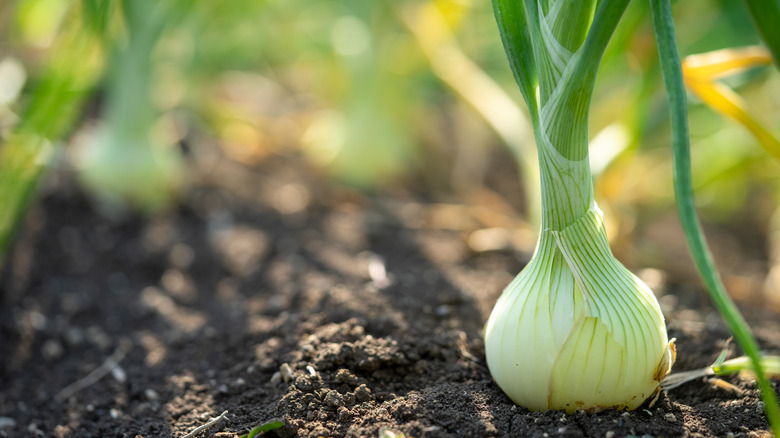23 Spring Fruits And Vegetables, Explained
After many short, cold days, there is nothing like the smell of magnolia flowers or the bright green of a new bud sprouting from a tree. It is springtime, finally, and the world can open its sleepy eyes and stretch back to life.
There are a plethora of fruits and veggies that are front and center during this peachy season, and to not seek out and enjoy some of this produce would be a wild shame. Spring is one of the most bountiful and happiest times of the year, and some of the best ways to celebrate the greenery and fragrance that suddenly surrounds us during the spring months is by eating spring produce. Whether it is something sour, sweet, or bitter, you are sure to find a spring item that becomes a new favorite. And who knows, maybe you will love it so much that each year you will look forward to the coming of spring and the return of your favorite food.
Strawberries
While it is true that strawberries are available all year round in supermarkets, it is indisputable that they are simply just sweeter, more flavorful, and scrumptious when bought in-season, especially from a farmers market. If you can find a basket of these red springtime jewels, you will be delighted. The appearance of strawberries in markets means that the cold and wet days are (mostly) behind us and that it is time for lots of sweet, strawberry desserts.
There is always the classic strawberry shortcake that you simply cannot go wrong with, but if you are looking for some other strawberry concoctions try whipping up some strawberry bruschetta or strawberry spoon cake. Both of these dishes expertly highlight the natural sweetness and bright color of strawberries.
Green garlic
Garlic, with its flakey white skin and sharp, pungent smell, was not always this way. Before it aged, shriveled, and dried, your garlic was fresh and bright — in fact, it was green. Green garlic, which is simply immature or uncured garlic, has not gone through the curing process to dry and preserve it. Therefore, the skin, which you may only know as the thin, paper-like flakes that can be rubbed aside, is plump with water, and the cloves are fresh.
The flavor of green garlic is still very garlicky, but it is not as strong and can be described as more of a mix between garlic and green onions. Green garlic does not have the spiciness that cured garlic is known for, and this softer flavor makes green garlic great for purées and sauces.
Broccoli
What an iron-rich vegetable we have here. Broccoli, a superfood that is not only high in iron, but also boasts high levels of vitamin C, potassium, and folate, is a scrumptious spring veggie that can be served in a plethora of ways (via Healthline).
Broccoli is a type of brassica, meaning that it is in the same plant family as cauliflower, kale, kohlrabi, and collard greens, which can explain why the leaves of a broccoli plant so closely resemble collard leaves. To enjoy broccoli to its fullest, try cooking it simply. For example, steamed broccoli is a way to let the natural broccoli flavor shine through and ensure that any sauce you pair with your broccoli will be appreciated.
Broccoli rabe
Broccoli rabe has a similar flavor to broccoli but is comprised of more stem and less floret. To make it more clear, broccoli rabe, also known as rapini, is essentially small broccolis with small florets at the end of each stem.
Therefore, instead of having one large broccoli bulb that needs to be cut apart, broccoli rabe comes already pre-separated by nature, making it great for roasts, stir-fries, and even a broccoli rabe sandwich. The one trick to cooking with this springtime veggie is that the stems need to be peeled. Like broccoli, broccoli rabe stems are a bit tough and need a light peel to avoid a fibrous mouthful.
Broccolini
Okay, now we might be confusing you with all of these broccoli look-a-likes, but if you read carefully, you will be able to tell that they are all different. Broccolini, the last broccoli knock-off, is actually a hybrid between European broccoli and gai lan, a Chinese broccoli. This mixing created the wonderful hybrid broccolini, which is entirely delicious.
Broccolini differs from broccoli in taste and appearance. Like broccoli rabe, broccolini has similarly long stems, but they have fewer leaves and the added benefit of being more tender and therefore do not require peeling. Also, broccolini is sweeter in flavor than both broccoli and broccoli rabe, making it an easy and delicious side dish.
Spinach
Whether you like adding it to your smoothies, adore spinach salad, or enjoy it most baked into spanakopita, spinach is a delightful spring green that will boost your immune system and your taste buds. The leaves can be incredibly delicate, so when buying from bulk containers make sure to handle it with care.
Some people may only be familiar with savoy or flat-leaf spinach. Savoy spinach is somewhat wrinkled and can have very large leaves the later it is harvested. On the other hand, flat-leaf spinach is, you guessed it, flat-leaved and makes great baby spinach salads. If you are interested, there are also a multitude of other varieties of spinach such as Malabar, caramel, and red kitten spinach.
Chard
If you have the choice between white chard and rainbow chard, then you simply must choose the rainbow. Chard alone is a wonderful multipurpose green that can weasel its way into any soup, stir fry, dumpling, or braise, but on top of that, the color that rainbow chard can bring to your dishes is astounding.
With some chard stalks available in bright red, golden yellow, or with striking pink veins, the only reasonable option is opting for the colorful varieties and letting them bring some much-needed color into the last cold days of winter. If you are not a fan of chard, then consider trying it in a baby chard salad. The chard is milder in flavor when it is younger and tender, making baby chard the perfect way to bring new flavors and textures to salads.
Lettuce
Salads are what spring is for. Winter moseys along, and you wish that you had some nice crisp greens to munch on, and then all of a sudden, you have more greens than you could have dreamed for. Butter, oak leaf, romaine, iceberg, and many more types of lettuce are available for you to indulge in the spring as a way to celebrate the budding all around.
Whether as a side salad at the end, an appetizer at the beginning, or simply as a crunchy element on top of whatever you make, lettuce can be used in just about everything. Because the time for lettuce is almost upon us, it is important to know how to store your various kinds of lettuce so that it does not get slimy, moldy, or limp.
Fava beans
Fava beans are both good for your body and the earth. They are what are called nitrogen fixers, which are plants that add nitrogen back into the soil through nodules on their roots. Therefore, eating and growing fava beans means that you are indulging in a spring treat and helping the soil at the same time.
If you do want to try eating fresh fava beans, your best bet is growing them yourself. But don't worry, it is not so intimidating. These plants are speedy growers and often can take care of themselves. In warmer climates, you can even plant them in the fall and let them grow over the winter so that they are ready by spring.
Fava greens
While you may be familiar with fava beans and all of their wonderful uses, did you know that you can eat even more parts of this plant? The leaves in particular are scrumptiously tender, and a great spring green option. When the greens are sautéed they develop a flavor that is similar to pea shoots which pair well as a side dish to almost any meal.
You can also eat fava greens raw in a salad. Because the leaves are very soft and tender with a slight sweetness, adding them to a salad is a great way to enjoy their subtle flavor.
Limes
The citrus season may not be the best fruit season, but it is still pretty great. How can you argue about an abundance of limes? These green, puckering fruits are the perfect way to bring some life to your tacos, noodle bowls, or drinks. Also, they are great for desserts, can brighten up a smoothie, and are fantastic with cilantro.
These little green orbs, with their waxy skin and very sour flavor, come in many varieties. One of the most common types of limes are key limes, which are said to be more aromatic than normal limes and are slightly yellow in color. Not to mention they are the not-so-secret ingredient in key lime pie.
Lemons
Another citrus that, depending on your location, can be considered a winter fruit, is lemon. If you are somewhere colder where the seasons truly change, then lemons will probably start popping up in the spring. Regardless of when you get your hands on these morsels of sunshine, lemons, with all of their zesty goodness, will inevitably brighten your day.
Yes, lemons are delicious with savory foods such as fish, rice, or in salad dressing. But the real course that takes the cake is dessert, which can range from lemon cake to lemon curd to lemon tart. For our money, lemon desserts are arguably some of the most scrumptious available.
Green onions
If you cannot tell by now, spring is the time for alliums. You cannot go wrong with a medley of green garlic, spring onions, fresh shallots, ramps, and to top it off, green onions. They are a great garnish, can make fantastic infused oils, and are a wonderful addition to homemade kimchi.
So, what exactly is the difference between scallions and green onions, you may ask? As it turns out, there isn't one! Scallions and green onions are the same thing, and while they may be harvested at different times so that the bulb varies in size, they are technically the same plant. So, next time you are perusing some produce, make sure to appreciate a well-labeled scallion, and better yet, try making some scallion pancakes to celebrate with.
Cherries
Cherries are the ultimate fruit. Incredibly sweet, bite-size, and so very entertaining to eat, these little springtime treats are deliciously delightful. If you are really lucky, maybe you live near some cherry orchards and can go and pick them yourself. Romping around an orchard and eating cherries fresh off of the tree is blissful.
You can find dark, ruby red cherries, or those that are pink and tart, yellow with blushes of pink, or some that are so tiny it feels like they are mostly pit. With so many varieties of cherries, it would be a shame to let them go to waste and not bake a pie, galette, or tart with these gems of spring.
Fiddleheads
These whimsical, wild greens are fascinating to look at and simply divine to munch on. The fresh leaves of a fern that have not yet unfurled, fiddleheads have a very nascent nature to them. They look like they are hugging themselves with their leaves all bunched together into a tight curl. The texture of these funny sprouts is quite dense and somewhat like asparagus. The flavor, on the other hand, is very reminiscent of spring and carries all of the green brightness that we love about this season.
The best way to get fiddleheads is to forage for them yourself or at a farmers market. If you do get some make sure to treat them with the utmost respect and cook them simply by either steaming or roasting your fiddleheads. They are difficult to come across and are often only available for a few weeks a year.
Ramps
Ramps are another foraged spring food that is only available for a couple of weeks, if not days, out of the year. This vibrant spring vegetable is bursting with flavor that can be described as peppery or pungent. Overall though, the flavor of ramps is more or less a good blend between onions, garlic, and green onions.
These foraged greens grow widely mostly along the east coast, from Canada to Georgia. While they can be difficult to find in the wild, they are incredibly satisfying to cook and eat once you do encounter some. The added appeal of eating something that you foraged yourself gives ramps an undeniable flair.
Arugula
Arugula on pizza is so beloved because it and cheese are a match made in paradise. Arugula is a spicy green that has the ability to cut through fat and salt in the blink of an eye. These slender and lobed leaves may look unassuming, but if you know how to wield it, arugula can be an essential side dish.
Like many plants, arugula comes in many varieties, and with each new variety comes a new set of subtle flavors. In general, though, a good rule of thumb is that the younger, smaller leaves of the arugula will be sweeter and milder in flavor than any older and tougher leaves. And while older arugula leaves may be too spicy for a salad, they would make a fantastic arugula pesto.
Scapes
Scapes are perhaps the best specialty that spring has to offer. While almost all alliums produce these curly cue flower buds, the most common scapes that you'll likely encounter are garlic scapes. But what are they? Scapes are the bud of the allium, whether it is a leek, garlic, onion, shallot, you name it. This bud shoots out from the center of the plant while it is still growing, and instead of letting the bud bloom, the scapes are harvested to let the plant finish maturing.
Scapes have a distinct flavor that depends on what type of scape it is. For example, garlic scapes taste like garlic, but in a more subtle way that allows them to be eaten as a dish rather than simply an aromatic or a garnish. The other wonderful thing about scapes is their texture. Sort of a hybrid between the texture of asparagus and a string bean, allium scapes are very satisfying to bite into and devour.
Asparagus
The ultimate spring vegetable, asparagus is funny looking and sports a flavor that is so wonderfully unique and fresh, so naturally, it has stolen many hearts. Asparagus, which grows straight up from a central root, look like little green (or white or purple) trees that are then felled and bundled into perfect bunches for us to all enjoy.
Only available for a couple of weeks in the spring, asparagus is a prized spring veggie that should be cooked in a way that honors its texture and flavor. Simple roasted asparagus is one of the best ways to let this prized veggie shine.
Rhubarb
Rhubarb stems, which are the only parts of the plant that you want to be eating, spring from the crown of the rhubarb and branch out with large, leathery-looking leaves. On large rhubarb plants, these leaves can look like elephant ears, while on younger plants they are simply large and dark green,
Regardless of the size of your rhubarb plant, it is most likely mature enough to be harvested. If you do not have a plant of your own then you can also definitely find these sour and slightly fruity stems at your local market. They pair wonderfully with lots and lots of sugar, so go and enjoy a nice spring morning with some scones and rhubarb compote.
Artichokes
These alien-looking vegetables truly are harbingers of spring. If you have ever seen an artichoke grow, then you know how silly they look perched on top of their long stems. By the time these scaled creatures make it to our kitchens, they are ready to be prepared in a way that truly celebrates their delectable and delicate flavors.
While you can certainly eat the heart of the artichoke in a multitude of ways, you can also eat the fleshy part of the outer leaves as you peel them away. If you steam your artichoke whole and then take the layers off leaf by leaf, you can nibble on the bases of the leaves until you make it to the artichoke's heart.
Peas
Nothing screams spring like these little green gems. Peas, which come in lovely pea pods, have a wonderfully fresh and green flavor that pairs well with other springtime vegetables, as well as in a sauce, stew, or stir fry. While peas are available year-round in their frozen or dried form, it is undeniable that they are best fresh off of the plant.
Depending on the variety of peas you enjoy — whether they are snap peas, snow peas, or shelling peas — you will be sure to enjoy the scrumptious sweetness of a fresh pea. When they are high quality, peas have a delightful crunch and juiciness that pairs so well with their naturally bright and refreshing flavor. This flavor is also what makes peas so great in sauces and in dishes like a pea risotto.
Spring onions
We already explained what green onions and scallions are, so now it is time to go over what a spring onion is. Like green garlic, spring onions are onions that have been harvested to be eaten fresh. That means that instead of letting the onions dry through the summer and develop the yellow, purple, and white layers of skin that onions are known for, spring onions pop out of the ground and go directly to your kitchen full of water. The name comes from the fact that these onions are harvested in spring.
Because spring onions have not gone through the same drying and maturing process as regular onions, they are not as shelf-stable and have a much milder flavor. This makes them perfect for fresh salads or garnishes.
